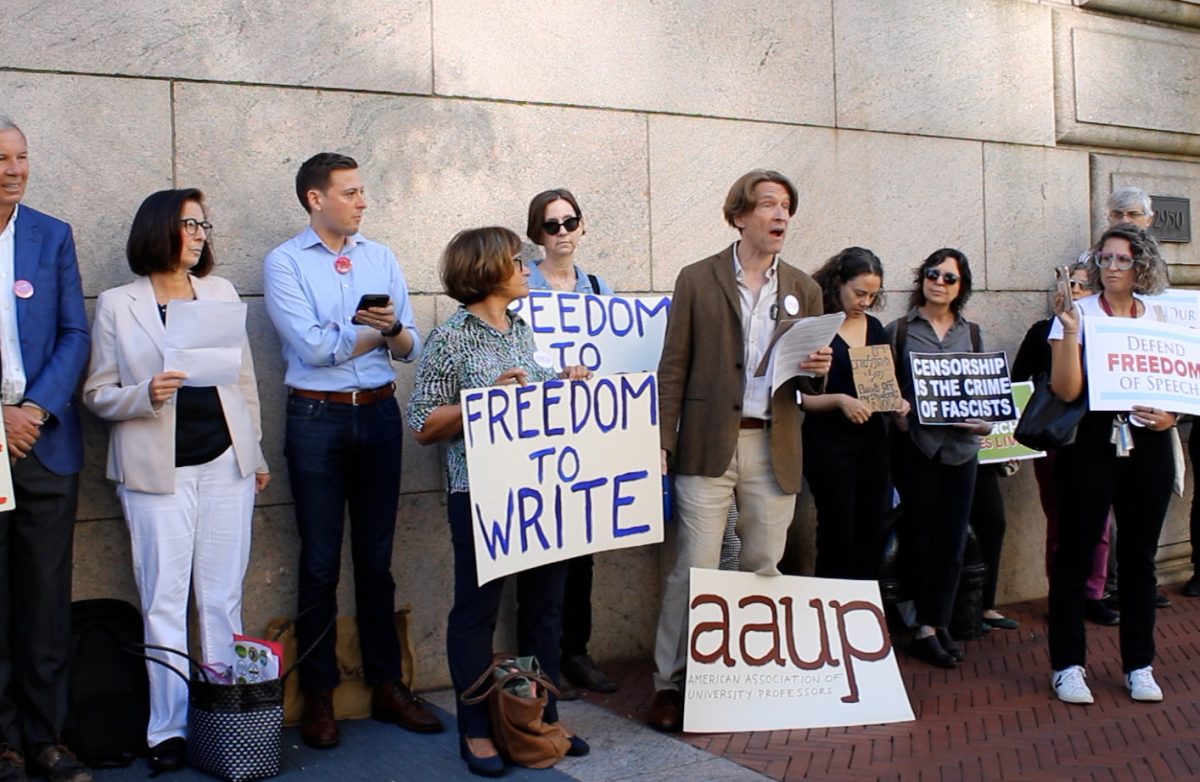
Hamilton Environmental Action Group’s (HEAG) weekend excursion to Washington, D.C., allowed Hamilton students to participate in the 2nd annual March For Science last Saturday, April 14. Before protesters began marching down the National Mall, many gathered to listen to several speakers and musicians who rallied for fact-based policy and education. Many of these speakers connected the movement to hot-button issues, such as gun control and race.
Earlier this year, self-proclaimed paleoconservative Paul Gottfried was invited to speak at Hamilton College. Controversy erupted pertaining to Gottfried’s espoused claims on how racial genetics limited cognitive achievement. Students and faculty debated whether Gottfried should have been invited to campus in the first place.
One side argued that the College should allow a range of opinions in an intellectual environment, while the other side argued that Gottfried’s pseudoscientific claims have no place on a college campus.
In President David Wippman’s email response to the Hamilton community regarding the controversy, he stated: “We are a community that insists upon academic rigor. That means, among other things, that we should not invite speakers to address subjects on which they have little or no relevant expertise or who espouse views that have no grounding in reason or fact.” This statement echoes the same sentiment upon which the March For Science is built.
At the March, speaker Hakeem Oluseyi, a prominent African American astrophysicist, shared a story that contrasts the claims made by Gottfried and others. Oluseyi observed that despite the large number of aspiring black astrophysicists in South Africa, very few of them were actually passing university physics honors exams.This inspired him to apply for a grant, which he received, to teach struggling black students. Instead of focusing on the content used in the honors exam, Oluseyi decided to go above and beyond by teaching them the most advanced concepts in physics, such as cosmology and quantum field theory. Originally his colleagues were skeptical and believed Oluseyi was too ambitious. However, every single one of his students passed the honors exams in the top 20th percentile.
In the United States there is a similar standardized score gap between black and white students, similar to what Oluseyi observed in South Africa. Some choose to use these types of facts as evidence for their claims of genetic racial inferiority; however, they ignore cases such as the one Oluseyi described. Oluseyi’s work reveals that the test score gap has nothing to do with intelligence and everything to do with the type of education that minorities often receive. Stories like this reinforce the purpose of the March for Science — to promote fact-based debate in all realms.
The March also encompassed issues like climate change that are similarly relevant on campus, and the world at large. The marchers demonstrated their commitment to creating a more positive global community rooted in facts and science.

















